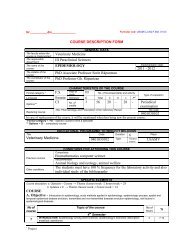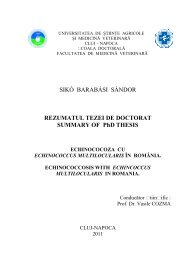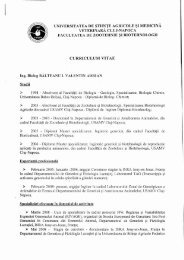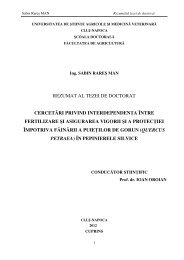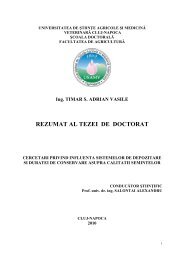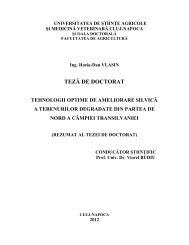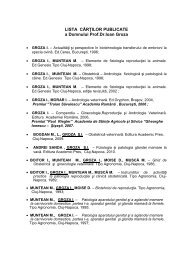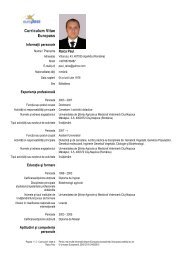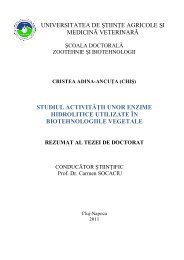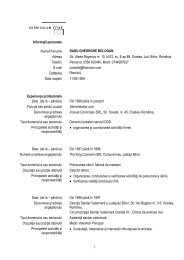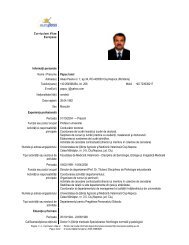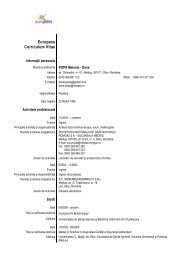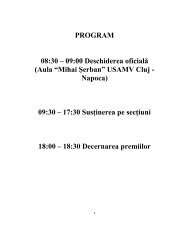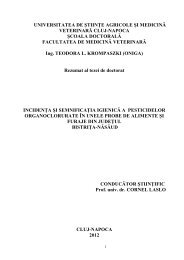Rezumatul tezei de doctorat - USAMV Cluj-Napoca
Rezumatul tezei de doctorat - USAMV Cluj-Napoca
Rezumatul tezei de doctorat - USAMV Cluj-Napoca
Create successful ePaper yourself
Turn your PDF publications into a flip-book with our unique Google optimized e-Paper software.
The experimental mo<strong>de</strong>l used, inclu<strong>de</strong>d the collecting of 5 water samples from each<br />
fishpond, from the 4 lake si<strong>de</strong>s and from centre, and 50 cm medium <strong>de</strong>pth. From the 5<br />
samples we ma<strong>de</strong> a single water sample, which was subsequent analyzed in laboratory<br />
conditions.<br />
For the i<strong>de</strong>ntification of different species from Saprolegniaceae family, we collected<br />
and analyzed water samples, carp species and spawns affected by disease, from Transylvania<br />
monitored fishponds. The water samples were collected in 2 litres recipients, from the 5<br />
areas of each fishpond, then the 5 samples were mixed in a 15 litres tank, collecting for the<br />
analyze a single blen<strong>de</strong>d sample from each fishpond, in a 2 litres recipient. The transport<br />
was ma<strong>de</strong> in the first 12-24 hours from the collection and the analysis were performed in the<br />
next day.<br />
I.3.2. The initiation of Saprolegnia culture in laboratory conditions<br />
To ensure that the possible differences, which could appear between the fungal<br />
species from Saprolegniaceae family present in the water, could be strict attributed to the<br />
differences given by water nature and the species which populates it, we performed as it<br />
follows: from each water sample, in a quantity of 2 litres, we ma<strong>de</strong> up 3 samples of 100 ml,<br />
in plastic sterile recipients. In each recipient there were introduced 10-15 spawns from the<br />
same carp female. Because the literature offers contradictory data respecting Saprolegnia’s<br />
<strong>de</strong>velopment temperature in different world areals, we suggested the testing of the fungus<br />
growing and <strong>de</strong>velopment mo<strong>de</strong>, at 3 levels of temperature: 10°C, 15°C and 22°C.<br />
Water samples, containing 10-15 spawns for artificial infestation, were introduced in<br />
a incubator, following the temperatures mentioned, between 3-7 days. In this period we<br />
ma<strong>de</strong> daily observations on each sample, to find out the starting moment of fungus<br />
infestation upon spawns and the intensity of its <strong>de</strong>velopment at that temperature.<br />
There was constituted a number of 207 samples for each collecting month, 3 samples<br />
for each fishpond, which were monitored at the 3 temperature levels, and making an<br />
48



